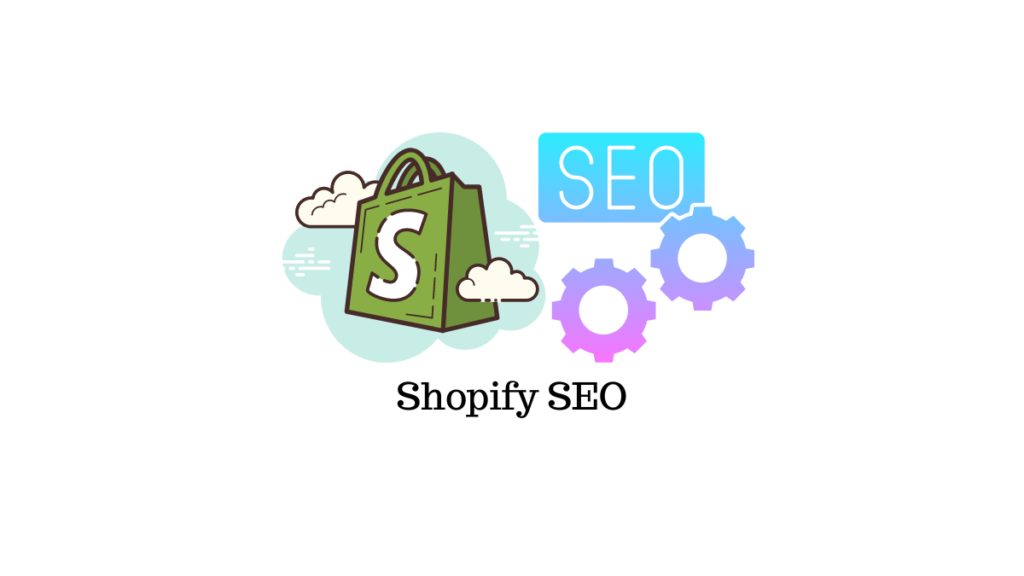Are you looking for a Shopify SEO guide to drive more traffic to your website so that you can generate more sales for your store?
In the digital age, shoppers have many places to go. If you want to bring them to your store, it takes more than a beautiful storefront.
When choosing your eCommerce platform, however, you have a series of important decisions to make. First, you must decide which platform best fits your business model. Beyond that, however, there are a few considerations you should make well before the platform is built and your site is open for business.
The ease with which shoppers can find your eCommerce store on the Web is an important factor in its success. The higher your store ranks in search engine results, the more people will visit it.
So, how can you rank your Shopify eCommerce store?
Search Engine Optimization – Yes, SEO can help you increase your store visibility online!
From a business perspective, SEO is extremely important in today’s world. To know more about eCommerce SEO tricks, you can have a look at this detailed eCommerce SEO tips guide.
Shopify features some built-in SEO tools, but to climb up the rankings, you need to explore a lot of additional options. Keywords are the basis of creating an SEO-friendly site, but it takes more than just sprinkling them around your website.
Shopify includes some SEO tools, but for a higher ranking, you need to explore additional options. To rank high on search engines, you should know that keywords are the base of creating an SEO-friendly site, but it takes more than just sprinkling them around your website. Keywords alone aren’t enough to land on a page’s first page. There are many things that you have to take into consideration: key phrases and titles, fresh content, and content density, as well as internal and external linking strategies.
Here’s how to succeed in the Search Engine Optimization rankings for your Shopify store in 2022.
So, let’s dive in!
Shopify SEO steps to rank #1
Despite the fact that there are many factors associated with higher SEO, we have compiled a list of 7 steps that you can take to increase your Shopify SEO.
- Include Rich Snippets such as product rating schema, Price schema, FAQ schema
- Right Content Marketing Strategy
- Improve the User Experience
- Optimize Your Shopify Site Structure
- Build your store’s links
- Technical Shopify SEO
- Shopify SEO Apps and Tools
Include Rich Snippets
Rich snippets are a way that search engines understand what your eCommerce Shopify Store is about, and can help your eCommerce Shopify Store get more clicks in search results.
So what exactly are rich snippets?
Rich snippets are visual descriptions of products and websites that are displayed below a webpage’s title and before its meta description. The visual indicators are designed to entice searchers to click on your product or website.
Right Content Marketing Strategy
Content is King!
Your content is a free and powerful way to advertise your products. It’s also a great way to learn what consumers think about similar products and to find new keywords for marketing campaigns.
For your eCommerce Shopify Store, here are a few points to consider when it comes to content marketing:
To begin with, let me ask you a question first. Have you ever seen any store selling simple and low-quality products? Rarely, right!
This is due to the fact that the customers are always looking for cost-efficient, high-quality products. Your first step should be to make your customers aware of the benefits of your products and services, and this can be accomplished through strategic content.
Ramble! Some of the questions we hear from customers are less about the product and more about how to choose which hair extensions are right for them. Consider writing a blog post that educates your customers on choosing the right extension grade.
Next is keyword analysis. When choosing keywords to match with search terms, writers must remember to ask themselves questions that they think customers might ask.
For many goods, putting your content strategically helps your customers to reach more to your content and increase your site visibility, thereby resulting in higher SEO.
Improve the User Experience
Another way to improve your Shopify SEO is to provide seamless user experiences. Let’s study how you can do it.
- Boost Your Site Speed – Speed is important to your site’s accessibility. Easy navigation, quick load times, and a streamlined user experience mean your visitors will be less frustrated and more likely to stay on your site. To increase your Shopify store speed, you can use the following:
- A fast device friendly theme
- Optimized images
- Removal of unnecessary apps
- Use a Responsive Design – Responsive Shopify themes will ensure that your Shopify website works great on any device, including desktop computers, tablets, and smartphones. Improved user experience and navigation can greatly enhance your site and keep visitors on your site longer. This makes it easier for you to improve your rankings on Google, which in turn results in repeat visitors and increased conversions.
So, these two are very important points for the user’s experience point of view.
Optimize Your Shopify Site Structure
To optimize your site for Google search results, make sure that you organize your content in a way that makes it easy for shoppers to find and buy whatever it is they’re looking for.
How can you make your website easy to get around in?
Simplify!
You don’t want to make your store too complicated. If you categorize your site in a way that search engines can easily follow and index, it’s more likely for them to rank your products.
An SEO-friendly site structure looks like a simple site structure with focus keywords and topics that will help you rank higher in Google and improve user experience. For example, you can organize your content like this:
Home > Category > Sub-Category > Products
Always remember, your site is for your customers first, not anyone else! Additionally, you can add About Us or Contact Us pages to let customers know about your company and your products. All these pages help in building trust among customers.
And finally, set up a search box on your site. It won’t help your SEO directly, but it will help people find what they’re looking for and convert to customers, which is important if you want to make more money from the traffic you already have.
Build your store’s links
Backlinks are one of the other most important methods that can increase your Shopify SEO.
Your site’s backlinks communicate your content’s value to search engines. It’s a strategy that builds the trust of your audience and encourages people to refer others to your website.
But how do you obtain links to your store?
Follow the below tips to find “how”:
- Supplier/Manufacturer Links – Contact established companies whose products you sell and ask if they have a policy regarding links from your website.
- Industry/Influencer Interviews – Seek out industry leaders/ Influencers to interview, and use those interviews to generate links and content.
- Mentions – If you want to be mentioned on other sites, use mention.com to find mentions and ask the site-owners to link to you.
- Broken Links – To find broken links on competitors’ sites, you should search for products and services similar to yours. Once you find a website with a broken link, write the site owner a note offering a backlink to your website in exchange for them linking to your website instead. This will help both of you.
Technical Shopify SEO
Technical Shopify SEO means that you need to focus on the following technical aspects of your Shopify store. This is equivalent to non-technical SEO. So, check the following:
- Bots need to be able to crawl the site from a robots.txt file.
- The sitemap.xml file must be added to Google Search Console.
- Make sure you own your Google Webmaster Tools account.
- Set up Google Analytics and install it.
- Solve redirect issues.
- Make sure you use the right heading tags (H1, H2, H3, etc.).
- For an analysis of the site’s performance across all devices, plug in the URL into GTMetrix or Google PageSpeed Insights.
So, make sure you check all these points so that there is no loophole left for the SEO point of view.
Shopify SEO Apps and Tools
To increase Shopify eCommerce store visibility, it is very important to use SEO apps and tools as well. For that, there are numerous tools available in the market. Let’s have a look at the top SEO tools in brief:
- Plugin SEO – This Shopify app helps you target the SEO issues that are worthwhile to fix, helping you save time and money while still improving your SEO. It provides automatic, regular checking of page titles and headings, meta descriptions, speed, content, article structure, and more, all to make sure that your site is as optimized as it can be.
- Smart SEO – With Smart SEO, you will be able to add meta tags and alt tags to product and article pages in your Shopify store without making any manual edits. Additionally, the app will automatically add structured data to your store that is structured the way search engines need.
- SEO Image Optimizer – To increase sales on your site, use plenty of high-quality images. One way to keep your site from bogging down when loading up these images is to utilize an image optimizer like this one.
- Yoast – Yoast makes it easy to optimize your site by entering keywords that are relevant to your topic.
- SEMRush – SEMRush helps you find keywords that have a high commercial value yet are underutilized by your competitors, thus increasing your traffic and conversions.
You can use any of these tools to rank your Shopify store. Additionally, if you use any other tool, let us know in the comments section.
That’s it! In a short period of time, you’ll be able to climb the search results rankings by following this Shopify SEO guide.
Hope you liked this article! If you have any other suggestions or questions, feel free to drop them in the comments section below.






